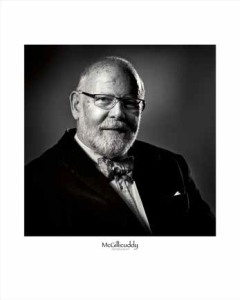articles/Portraiture/big-dog-convention-page4
Rolling with the BIG Dog - After 2015 Convention - part 4 of 1 2 3 4 5
by Damian McGillicuddy Published 02/02/2015

This way we could throw the paint horizontally across the frame for maximum visual effect, while also controlling the direction and spill of the mess we created, catching the overflow in our paddling pool. For the paint itself we used a non-toxic children's variety, since there was a very good chance that it would be going in the eyes and mouth of our poor model. We also watered the mixture down slightly, which gave us the opportunity to make the paint warm rather than drenching her in cold slurry!
Again we used simple third-party speed lights and employed an additional umbrella. Going back to my zonal control system, we set upa translucent brolly to light the backdrop and give us a pristine white background. And it's here that the first important point needs to be made, because there's a piece of information that's forever regurgitated about creating a white background - and, fittingly, it's so hilariously wrong that it almost rhymes with 'Pollock'.
You've all heard that, in order to get a Daz-white background, you need to ove rlight it by as many as three stops - which is just crazy. Doing this will create reflected light from your backdrop that overpowers your key light and becomes the most dominant source in the image. You know those high-key images where the background appears to 'eat' into the flesh of the subject like some horrible disease? That's because the photographer has thrown way too much power at it. The only way you can throw so much light at a white background is to ensure the subject is so far away that the inverse square law lends a hand - the secret, use your meter!!!
The truth is that there's no such thing as pure 255 specular white light in the real world (at least, not that we can create under most photographic circumstances), so you're never going to achieve that and you'll spoil your picture in the process. Over lighting my backdrop by one to one and a half stops is more than enough to give me the pristine white I'm looking for - and because it isn't overpowering and thus doesn't become the dominant light source, it doesn't affect my lighting of the subject.
Proving the versatility of the umbrella, we're using the second one more conventionally to create a more even spread of illumination. By positioning it above the model at a fairly steep angle, we're almost getting the effect of a beauty dish. However, because of the constraints of the space we were working in (namely that the ceilings were relatively low), I couldn't use the 60-inch brolly I would usually have chosen for the job.
It's here that an average photographer, unable to use the equipment they had intended to, would sacrifice the lighting or otherwise compromise to the picture he or she had in mind. However, a good photographer does something else: they improvise. While there wasn't space to use a bigger umbrella or modifier, I could still use my 36-inch brolly and 'tail' it (a term that I made up, but my team knows what it means!) by clipping a piece of reflective material onto the bottom half, artificially extending it and replicating the larger 'dish' of a bigger brolly or modifier.
Please Note:
There is more than one page for this Article.
You are currently on page 4
- Rolling with the BIG Dog - After 2015 Convention page 1
- Rolling with the BIG Dog - After 2015 Convention page 2
- Rolling with the BIG Dog - After 2015 Convention page 3
- Rolling with the BIG Dog - After 2015 Convention page 4
- Rolling with the BIG Dog - After 2015 Convention page 5
1st Published 02/02/2015
last update 09/12/2022 14:51:42
More Portraiture Articles
There are 0 days to get ready for The Society of Photographers Convention and Trade Show at The Novotel London West, Hammersmith ...
which starts on Wednesday 15th January 2025





